You’ll no doubt see lots of wildlife when visiting the Dominical area of Costa Rica. There are exotic birds, monkeys, and even whales to check off your list. But if you want to get up close with some more elusive creatures, Reptilandia is the place. This reptile park, just a short drive from Dominical, has one of the largest collections of snakes, turtles, and other reptiles that we have ever seen. In this post, we’ll tell you more and help you plan your visit.
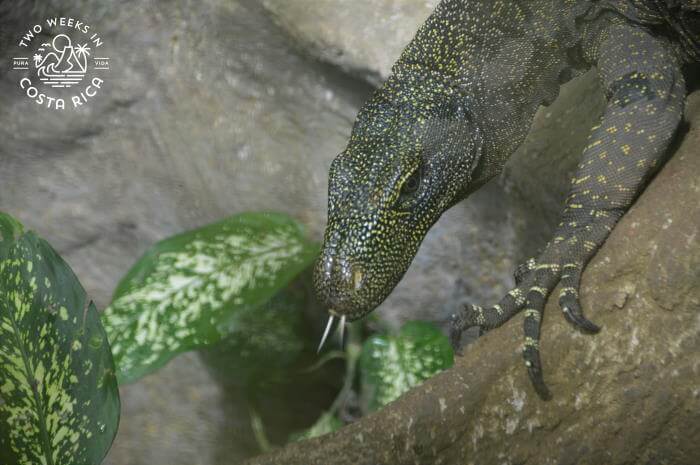
About Reptilandia
Orientation
Reptilandia is just 7 km (4.3 miles) from the surfing town of Dominical. It’s right off the mountainous road to San Isidro de El General and very close to the well-known Nauyaca Waterfall.
Many people drive right past the entrance. There is a sign with snake on it, but if you’re driving quickly on the curvy road, it’s easy to breeze by. Those who do stop, however, are in for a treat.
Reptilandia has around 90 species of reptiles. Many are native to Costa Rica, but others are exotic species from different countries. For example, you’ll find the only Komodo dragon in Latin America as well as some huge anaconda snakes. There are even giant land tortoises, similar to those you would see on the Galapagos Islands!
Property Layout
The Reptilandia property is small but has a lot of reptiles packed in.
After parking, you’ll pay admission. This is a very casual place, and the owner will usually be the one helping you. There are no wristbands or entrance tickets; just show up, pay, and enjoy. See prices and hours in the Planning Your Visit Section, below.
From the entrance, it is only a few steps to the exhibits.
The property is laid out in a small loop with a large covered area in the middle. This covered part has the most snakes. There are at least 50 glass enclosures with all the different species on display.
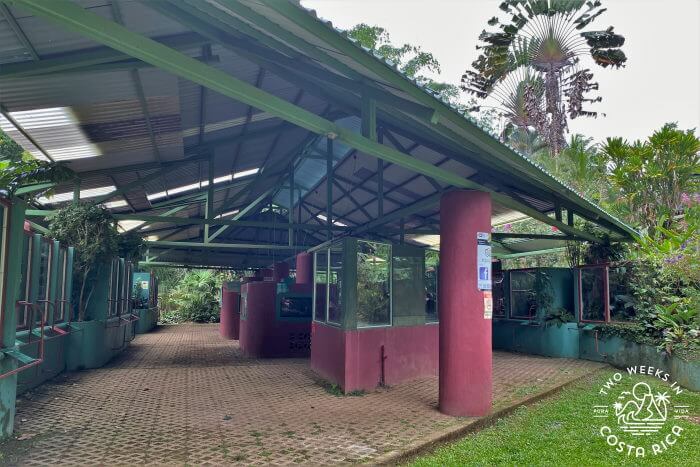
Around the center structure is a grassy trail that makes a circle along the outer edge of the property.
As you walk, you’ll see even more reptiles. These ones are generally larger (like the Komodo dragon or land tortoises) or their habitats require more space and water (like the turtle pond or crocodile lagoon).
Also enjoyable when visiting Reptilandia are the many different types of trees, plants, and flowers. The gardens in and around the facility are nicely done.
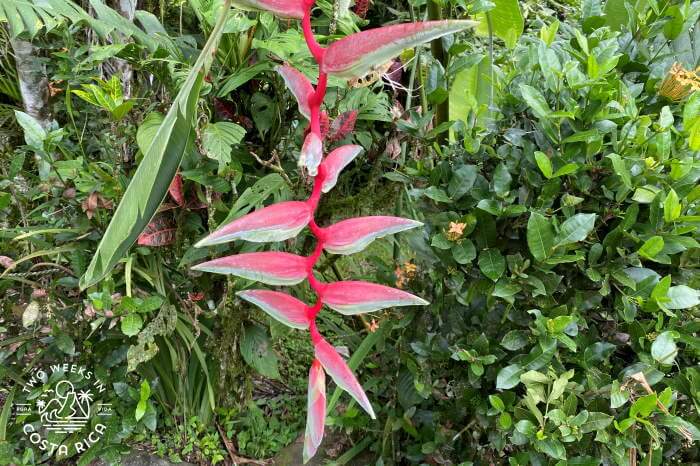
The Enclosures
Something that you will appreciate early on at Reptilandia is that each enclosure is completely unique. They have all been set up to make the animals feel comfortable in their habitat.
Snake Habitats
All snake enclosures are fronted with glass so that you can easily see inside.
The interiors are decorated with logs, rocks, and growing plants to simulate that snake’s natural environment. For example, tree boas have lots of branches to climb on and curl around. Rattlesnake enclosures, on the other hand, have rocky nooks to coil up inside, just like they would in nature.
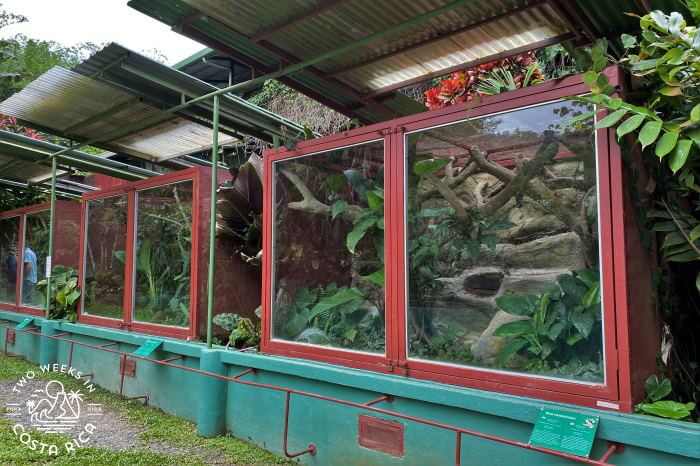
When visiting the snakes, it’s almost like a game of hide and seek. Sometimes the snakes blend in so well because of their color or patterns that it takes a minute to find them, even if they are large. Once you do though, you can really appreciate their beauty.
Another impressive feature of the snake habitats is that they have movable roofs. This allows the staff to expose the enclosures to natural sunlight or rain depending on what each snake needs. Reptiles really like to bask in the sun, so this is an important feature for them.
Open-Air Exhibits
The outdoor reptile enclosures are a lot more exposed to the elements. Usually there is just a waist-high concrete barrier separating you from the reptiles. With some more dangerous species (like the crocodile), there is also a fence.
Like the snake habitats, each outdoor exhibit is unique. They are landscaped with trees, flowers, rocks, and in most cases, manmade streams and pools. Being able to watch the animals use the different parts of their habitat is really interesting.
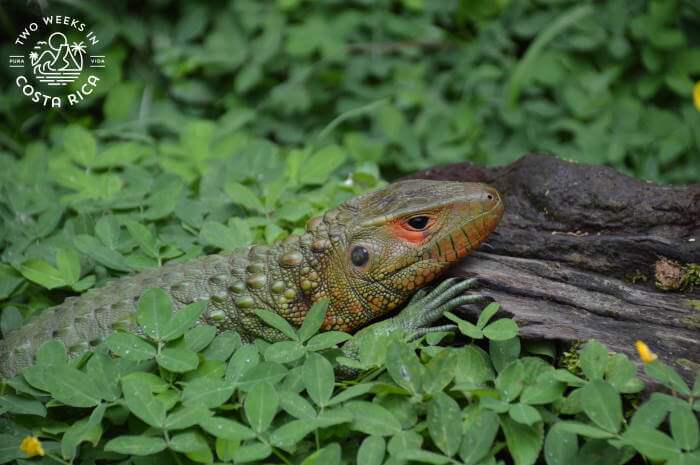
Water Exhibits
In a few spots along the trail, there are also some aquatic exhibits to check out. These are fun because, as you stand in front of glass, you can see half water and half terrestrial (land) habitat. It almost gives you the feeling of taking a dip in a pond, without getting wet.
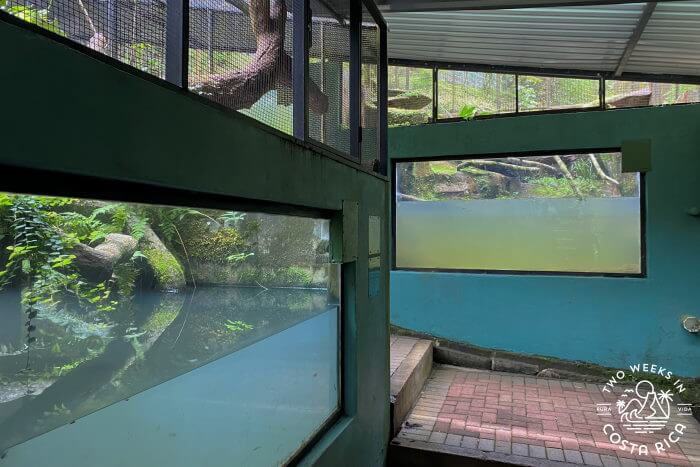
These water habitats are a great way to see things like turtles, which spend a good part of their day underwater. Tiny fish and sometimes frogs are also swimming around. We noticed on our visit that the water sections also attract a lot of pretty dragonflies.
Highlights at Reptilandia
Snakes
The biggest highlight at Reptilandia is the entire collection of snakes. Being able to see these species up close without it being dangerous is very unique.
It’s also nice to be able to learn about each snake. Information plaques in both Spanish and English tell which area the snake is native to, how large they get, and what they eat.
One of our favorite snakes was the tiger rat snake, which has a beautiful pattern of cream and black colors.
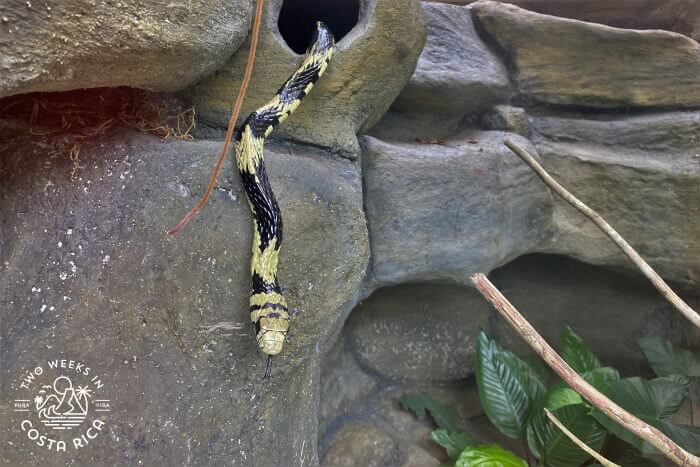
Also impressive were the giant snakes like the boa constrictors and anacondas. One of the anacondas must have been at least 25 feet (7.6 meters) long!
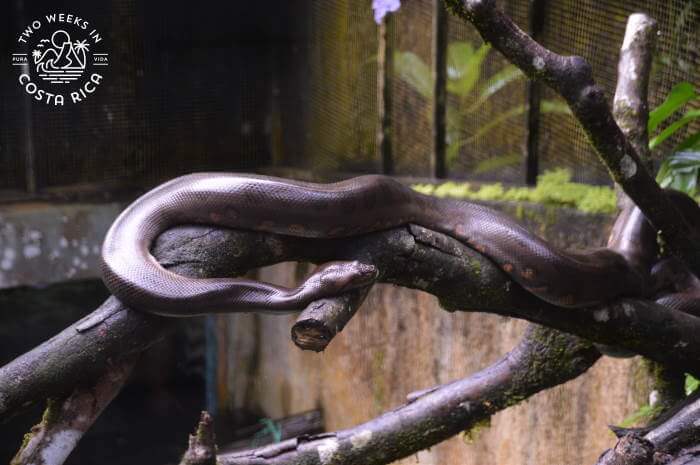
There are, of course, the most common Costa Rica snakes as well. You’ll find the eyelash pit viper, green vine snake, and deadly fer-de-lance.
Another neat feature is the snake nursery. In a small section of the snake exhibit is a separate space with snake eggs and baby snakes on display.
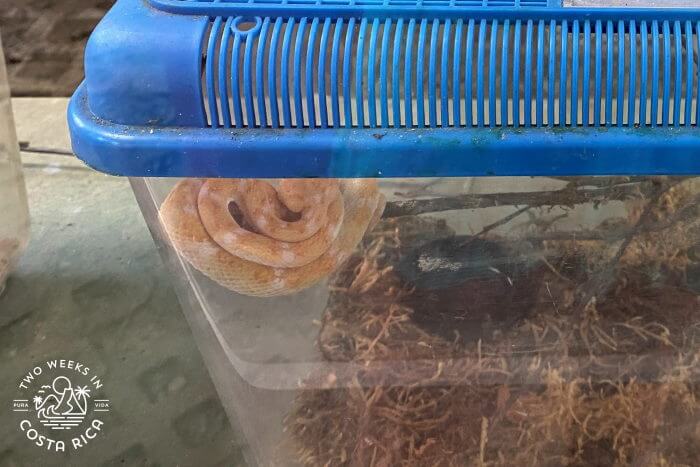
Big Reptiles
The snakes are exciting, but the larger reptiles are what make Reptilandia stand out from other reptile exhibits in Costa Rica. Here are a few of our favorites.
American Crocodile
The American crocodile is the species native to Costa Rica. You can see them up close on boat tours but otherwise mostly at a distance.
The croc at Reptilandia is about 8 or 10 feet (2.5 to 3 meters) long. You may catch it sunbathing at the edge of his pond or taking a dip to cool off.
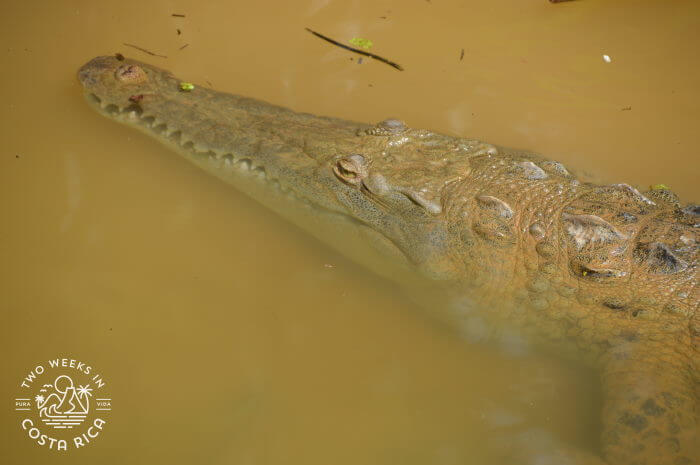
The crocodile has a huge enclosure right next to a small bridge, which makes for a nice spot to take photos.
Komodo Dragon
Komodo dragons are endemic to some Indonesian islands, so seeing one in Costa Rica is a treat. In fact, according to Reptilandia, they have the only Komodo dragon in all Latin America.
These reptiles are considered dangerous, apex predators, and have even been known to attack humans. For this reason, you’ll safely view this dragon through some metal fencing.
Black Water Monitor
The black water monitor is the second largest lizard species in the world. It can reach lengths of almost 10 feet (3 meters). The one at Reptilandia is about 3 feet (1 meter) long. If you’re lucky, like we were on our last visit, you might see it walking around on the ground and taking a dip in the pond within its enclosure.
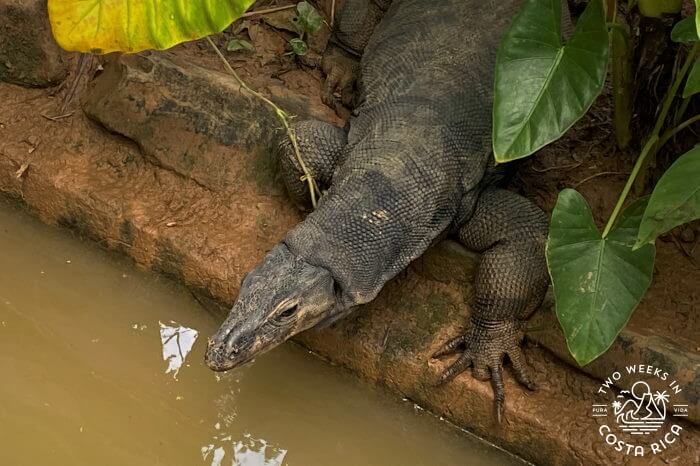
Turtles and Tortoises
The variety of turtles and tortoises at Reptilandia is impressive as well. Shortly after you enter, you’ll see some slider and mud turtles in a small pond. When the sun is out, these guys love perching on logs.
In the water exhibit toward the end, you’ll also get to see some large river turtles swimming around and occasionally coming up to the glass.
But for turtles, the tortoises are the showstoppers. These guys are slow giants and friendly to visitors. There are several different species, all exotic to Costa Rica. One of the biggest is nicknamed Jumbo. He must weigh well over 100 pounds (45 kg).
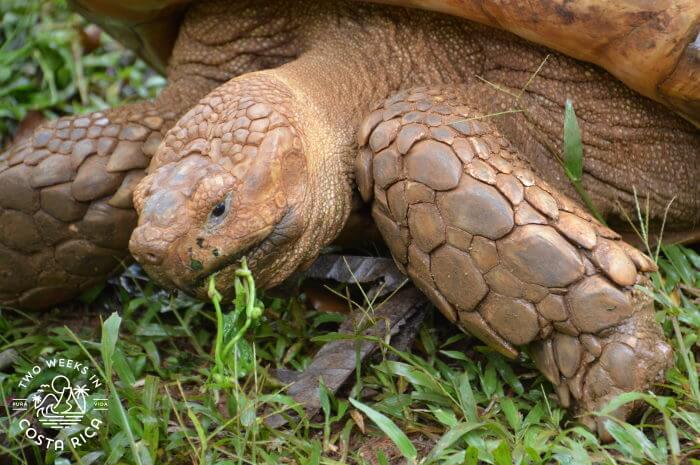
Planning Your Visit
Hours
Reptilandia is open every day (including holidays) from 9:00 a.m. to 4:30 p.m.
Cost
Foreigners: Adults, $12. Children (under 14), $6.
Costa Rica Legal Residents & Citizens: Adults, 4,000 colones. Children (under 14), 1,000 colones.
Parking
Parking is free. The lot is not guarded but is located right in front of the reception area.
Accessibility
Reptilandia has easy walking paths but some inclines and steps. While the entire park is not handicap accessible, the portion containing the most snakes is suitable for a wheelchair or person with limited mobility.

Conclusion
We have been to Reptilandia several times and have always enjoyed it. From the outside it does not look like much, but once you enter, there is a whole world of reptiles to discover. We highly recommend this activity for wildlife enthusiasts and especially families with curious kids. It’s an easy way to get up close with some unique species.
Have a question about visiting Reptilandia or want to share your experience? Leave a comment below.
Looking for more information to help you plan your trip? Browse these articles:
8 Things to Do in Dominical – Looking for more activities to do in the Dominical and Uvita area? Check out this post for some good options.
San Isidro de El General – This small city in the mountains near Dominical is very authentic and hosts one of the country’s largest farmers markets.
7 Off-the-Beaten-Path Things to Do Near Manuel Antonio – For even more day trip activities, check out this post with some lesser-known things to do.
